Media | Articles
5 reasons to adopt orphan project cars
Walk the aisles of your local pick-a-part, or scroll the seemingly endless pages of projects listed for sale on the internet, and you’ll find plenty of cars just waiting for a new home. Decades of market forces have shaped the roster of cars that have survived this long. There’s a certain safety in going with the grain—relatively generous parts supply, aftermarket options, a knowledgable and engaged community—but going the other direction with a particularly rare or unloved model has its own rewards. Here are five reasons to adopt a car from an orphan brand:
Forces you to better understand your car
Parts availability often trends with popularity and production numbers. That means that while those who love Chevrolet Chevelles are spoiled by the ability to procure just about any part or piece they might need to keep their car on the road. Someone with an AMC Javelin is often left to sort out how new and old parts might play nice together.
This doesn’t have to be a bad thing. Mainstream bolt-on kits often make meaningful compromises, and the simplicity of a one-stop shop means the installer doesn’t need to be terribly scrutinizing. In absence of such easy solutions, we might more clearly think through what we are trying to build and not get distracted by low-hanging fruit.
You’ll become a member of the community by necessity
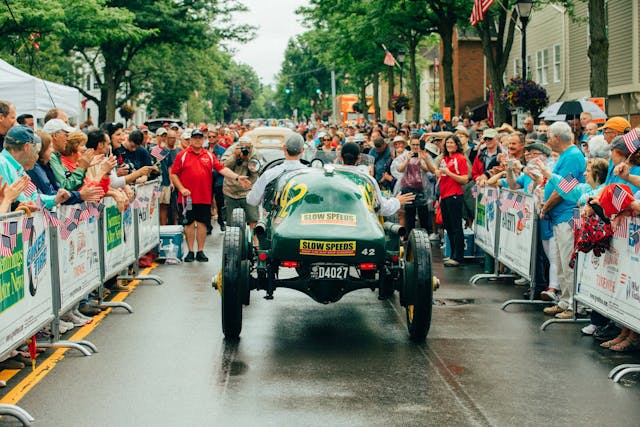
Lived experience is a powerful thing. Usually, the most valuable resource for someone working on a given car is to talk with the people who have been doing it for much longer. Our knowledge and understanding of how our cars work changes over time, as well as changing with the technologies at hand, so not everything should be taken as gospel (look no further than a lot of performance modification books from decades ago) but there is incredible experience to mine from those who have tread the path before us. It’s probably possible to restore a first-generation Mustang without engaging with anyone else, but doing the same with a basket-case Nash? A lot tougher, and a few savvy Nash friends will make your journey a lot richer.
It’s impossible to hide
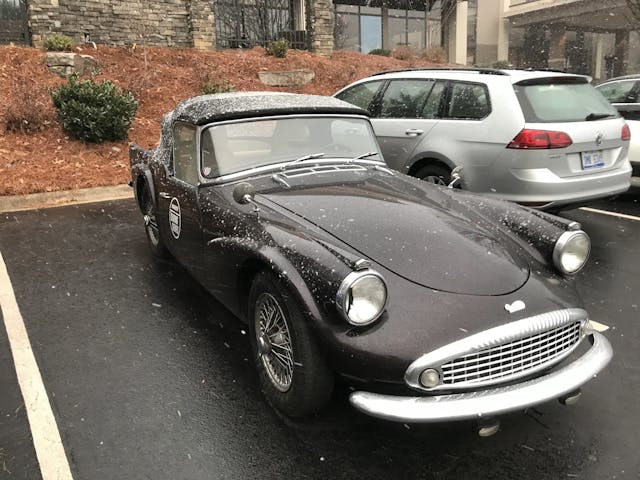
It’s fun to be known for something, especially if you can pick what it is. “Steve? The guy really into rotary NSUs?” Or “Alex? The Studebaker nut?” Just about any old car will stand out in modern traffic, but an orphan of years gone by is likely to draw even more attention. People just don’t know what they are. The rarer it is on the road, the more likely it is to draw comments and conversation at every fuel-up or parking lot. Not everyone wants to become the center of attention wherever they go, but it can be to have your work in keeping history on the road foster human connections.
Marketplace
Buy and sell classics with confidence
Event eligibility
If you like driving your car and attending tours and events, an off-beat or otherwise unusual car can be your ticket into exclusive gatherings that run-of-the-mill cars will not be allowed access. Driving tours and large shows typically have to cap entry, often favoring interesting or unique cars so as to avoid a parade of too-similar vehicles. One example: The Colorado Grand “is open to racing cars and sports cars of distinction built in 1960 or before.” That means Peerless GTs are as welcome as Mercedes-Benz SL Gullwings or Shelby Cobras. One of those is available on a blue-collar budget, while the other two are, well, not.
The barrier to entry is typically lower

Speaking of prices, take a scroll through your favorite classifieds site. It doesn’t take long to suss out that defunct brands generally trade at lower value than those from, say, the Big Three. Your dollar often goes further if your are agnostic as to the grille badge. For the price of an entry-level but popular car, you can sometimes nab the top trim of a more obscure car. While others may spend time and money up-badging or even up-restoring (think of all the Chevrolet 150s that became Bel Airs over the years) it can be satisfying to have piece of history that requires no asterisk. Not to mention the fatter parts budget.
Are there downside that come with choosing the path less traveled? Of course. It’s harder, for one, but the upsides should not be ignored. An oddball car might send you on an adventure that benefits not only you but helps preserve a small part of car culture that would have otherwise faded away.
Now if you’ll excuse me, I have motorcycles to haul and a space in my driveway for a Studebaker pickup to do the grunt work. It’s out there somewhere.

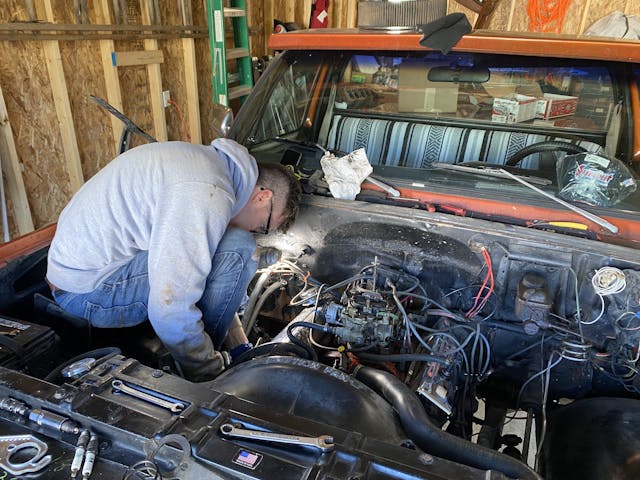
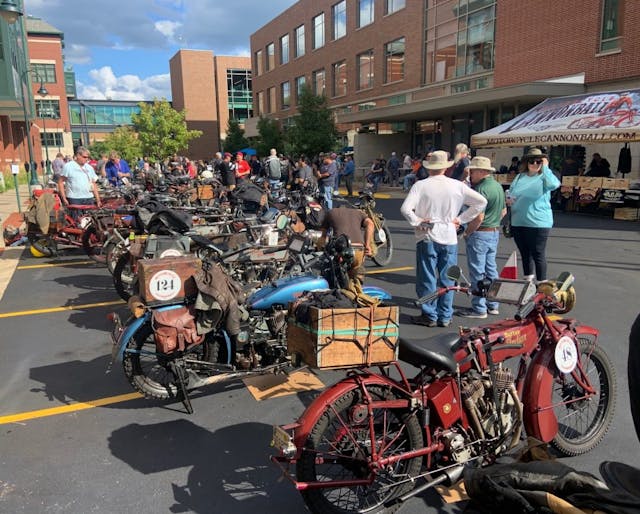



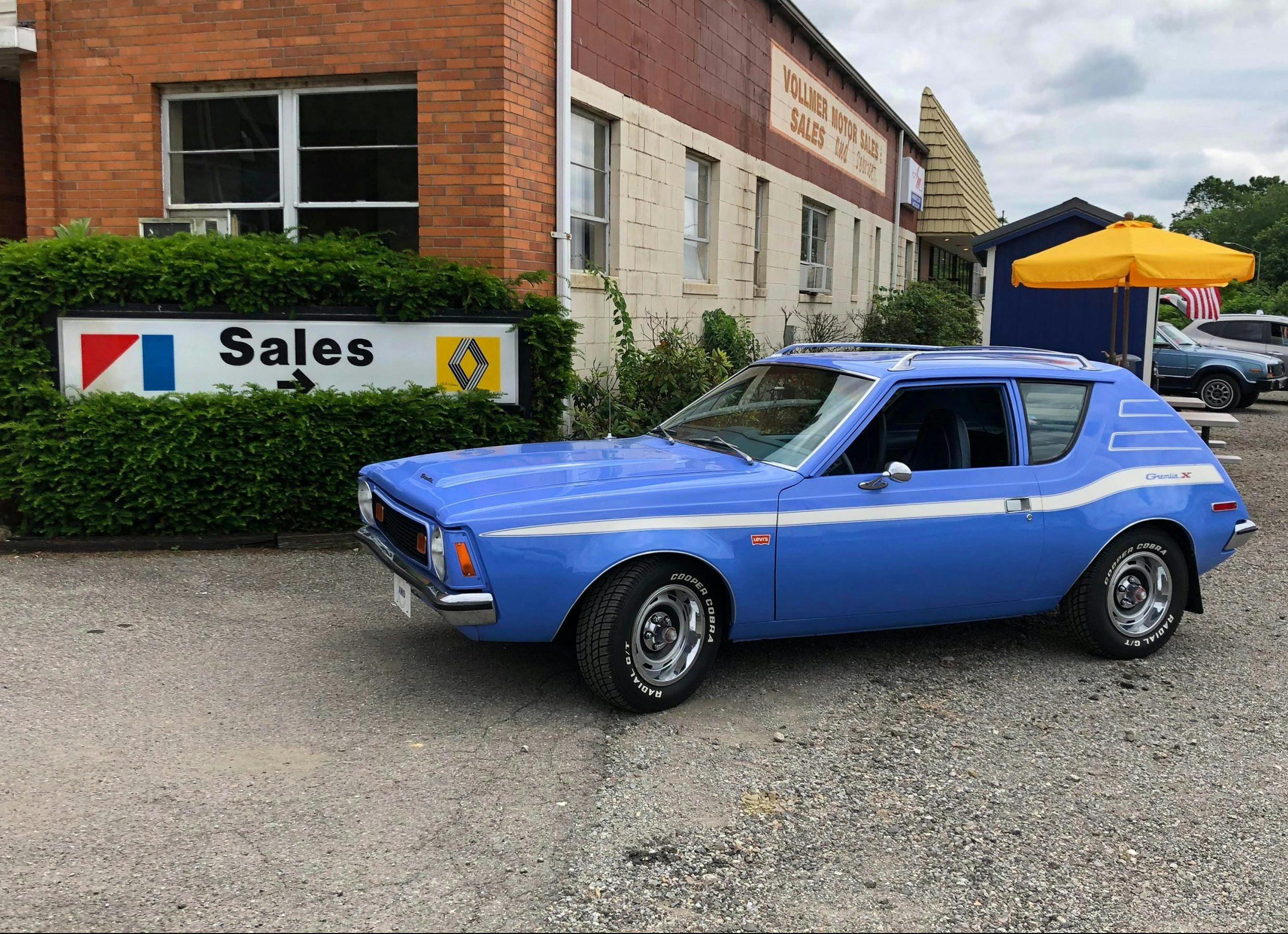
My Father was, I guess, a little before the times. The first car I remember that he had was a 49 Kaiser, I do not have any fond memories of it at all. I was about 7 years old and did not have the finger strength to even push the button to open the door. That was from the inside and a real safety issue. He traded that ugly duckling in for a 53 Nash. I learned to drive it in 1958. Had a terrible problem with the three on a tree not to mention that the then teenage girls were not impressed at all. Then, not to break with his string of future orphans, he bought a 52 Packard and it needed constant transmission work. It was the cause of an extended vacation from Wisconsin to Maine while it sat, being repaired in upstate New York. Finally he succumbed to one of the big three with a 55 Ford. Now I really liked that car. Ironically, the first car I got to drive regularly that wasn’t my Fathers was a 49 Studebaker. In retrospect the acorn did not fall to far from the tree. Finally saw the light and I went with Buicks, Fords, and now Porsches. Cars do evolve into orphans or classics for valid reasons.
My first, and only so far, foray into classic cars is a 1965 Meteor Montcalm convertible. I haven’t seen another in the seven years I’ve owned this one. Many people think it’s a Mercury, I think it’s a Ford. (no name badge on the car.) I have the original owner’s manual and nowhere does it mention Mercury, only Ford Motor Company of Canada. I’m not even sure what to call it anymore- a Ford Meteor, a Mercury Meteor? Either way, it’s unique and fun to drive. However, I’d love to find parts for it!
Yes Hal, I had one just like yours. Maroon with a white top. 352 engine. Very nice to drive. I think they are referred to as Mercury Meteors. Brings back many good memories, enjoy!
Enjoy your Meteor!
They are Meteors, by Ford of Canada, sold at Mercury dealers to give them access to the lower end of the market.
Just like you don’t say “Ford Edsel”, you don’t say “Mercury Meteor”, unless you’re talking about U.S. ’61 Meteor 600 and 800, which are different than the Canadian ’61 Meteor.
Confused?
Then there’s the ’62-3 Meteors, based on the smaller Fairlane. Same Canada and U.S.. These were dropped in the U.S. for ’64, and the Canadian Meteor returned as a full size car. They were sold into the 70’s. The Auto Pact trade agreement made Meteor (and all Canadian variants) unnecessary.
Hal, you don’t have to call it a Ford OR Mercury; you can call it a Meteor. Ford of Canada offered these beginning in 1949, and the ’65 sub-models were Rideau, Rideau 500 and Montcalm, built as 2-Door, 4-Door, Station Wagon and Convertible.
All around great comments. Yes orphan cars can be less expensive and this sometimes attracts folks with “meager resources”that buy them and realize they can’t afford to fix them. Other times folks like me with resources want something different. Orphan cars are great retirement projects as they often require a lot of time and keep one busy. It IS vital to make friends with knowledge and parts, and as you learn about the vehicle it is is important to pass the knowledge on to others. Today forums help a lot, but beware of the “experts” that “believe” they are correct, but are NOT. It takes time and patience to filter out the B.S. and find parts, but that can also be fun. Going to shows with something different is fun and you’ll hear stories, mostly nice, but their is always one negative jerk, just the way it is. All in all owning an orphan is fun, and having fun is the important part.
Mine was an orphan in a couple of ways. It’s a ’59 Sprite restoration/rejuvenation that was initially begun in 1981 then stalled shortly afterwards until I acquired it in early 2017 when the owners moved out of the country. It had been stored in a dry heated garage all that time so was in great shape, especially compared to some projects I’ve seen since.
I began work in earnest on the car in November 2020 and had it on the road in July of 2023. It’s “public debut” was at the European Classic Car Meet hosted by the Vintage Sports Car Club of Calgary.
I have to agree with all five points raised in the article… I’ve learned a lot about the Bugeye while working on it not to mention learning new skills like welding and painting; the community has been very supportive with new friends being made from Virginia Beach to Portland, from Vancouver BC to the eastern provinces and across both the Atlantic and Pacific; the car generates lots of smiles and waves as I’m driving around; I’ve been invited to show the car at a couple of events; and the Bugeye is less expensive than the “big” Healeys!
I’ve enjoyed working on the car and sharing that work on my YouTube channel, Econobox Garage. I’m looking forward to the next driving season!
Happy motoring
Ian
I like orphans. I worked at an orphanage for 18 years. AMC, Stude, “furrin makes” etc. are my thing. I’m bored with common Chevs, Fords and non forward look Mopars. Seen one seen em all. Now that being said my friends two stroke Goliath will unlikely ever move under its own power. My Grandfather could make anything ! He took “junk” and converted it to useful farm machinery-i.e. Buckrake. I bet he could figure out the engine in the Goliath. He was of the old guard that had as it’s entry point that you couldn’t get into German “tech school” unless you could turn a block of metal into a coat hook with just a file . He and others of his ilk are lost as are the high school based tech classes and non vocational school generational passers of the flame. Many owners at car shows never turned a wrench, lit a torch or filed a part.
My last 3 street rods were / are orphans. A 1937 Oldsmobile Touring Sedan, a 1962 Buick Special Convertible and I am just finishing up a 1946 Hudson Pickup. All I can say is expect everything to cost more and be harder to find than a mainstream brand. Also, little if any reproduction parts.
On the plus side, you don’t see 10 more just like it when you go to a show.
I like the oddballs and orphans. It’s better than seeing 20 of the same thing in a row. Funny enough most of my friends are muscle car guys so I am always the oddball in my Supra.
Everyone needs a hobby to keep them active and young in their retirement. Restoring a car, any car, will keep the brain active as well as the body. It will make you the envy of the neighborhood because everyone wants one. Old cars are just cool, no matter what make or model. And they are fun to drive in parades and take to shows. It’s fun to talk cars with other car lovers. I’m always pleasantly surprised to drive around the neighborhood and see all the old cars tucked away in garages, but disappointed in the fact they don’t drive them.
A 77 yellow Pacer station wagon with woodgrain on the sides and a 401 under the hood. Doesn`t get any stranger than that.
That sounds great to me!
I don’t consider my 53 Studebaker and my 79 Plymouth, to be Orphan cars, But rather, Elite cars. This not a modern trend I have jumped on nowadays,. But “Orphan Cars” as they are now called, have been a part of my life with cars for 70 years. I have had all the trendy cars over the years, but none compare to my Studebaker, i finished at age 77, and drive now. I just rescued the Plymouth, from a 22 year sleep.
Better work on your spelling. Journalism is one of the few occupations where spelling still counts.
Old VW Dunebuggies!
You buy an “almost complete” one thinking you’ll give it a good polish and get it on the road only to have the previous owners handy work cause you to scratch your head and wonder “WTF were they thinking?”
Upside to the headache is that they’re still relatively cheap.
I have a ‘90 Reatta convertible. Hagerty says I should up the value to $12,500, yet Hagerty Marketplace won’t let me list it at auction with a $7,750 reserve. What’s wrong with this picture?
Although nowhere near being a rare or ‘orphan-category’ vehicle, my base model ’65 Falcon 2-Door Sedan was one that often brought comments from nearby people at gas stations, when filling up. So many folks apparently had parents who drove these and many learned to drive in one. I determined to drive it as much as possible after its resurrection was done and enjoyed the heck out of it.
All Ford car shows usually have a majority of Mustangs in attendance, which is expected. When millions of something are produced and also have an abundance of aftermarket support, it makes sense from a cost standpoint, to go that route. Many of those are modified to suit the owner’s taste. Lots of chrome do-dads on the Engine is popular with a lot of folks, and again, it does ‘something’ for that owner to build it that way. But it’s difficult to stand out from the crowd when there are so many just like it, seen almost every day.
The engineering facility where I worked instituted an annual car show for employees and it usually included about fifty vehicles of wide-ranging models. There were full-blown race Camaros to British sports cars to a Model TT Depot Hack. These were entered primarily by engineers and us technicians, and voted on by participants, plus a couple executive special awards. One of the special awards I received for my lowly Falcon was from the Chief Engineer, who commented about appreciating a vintage car that was devoid of run-of-the-mill cheap-looking add-ons and simply represented an example of a clean factory appearance. Being an engineer, he added that he particularly liked the fact that all my modifications were incorporated in such a way as to appear ‘factory-correct’… in a plain white package.
His favorite was the absence of any visible Shifter for the AOD Transmission. I had used a 2-Speed Wiper Switch (placed into the Lighter opening) to select the desired range, a modified factory AMP Gauge to indicate which detent I was in, and a home-made electromechanical cable-driven setup that resided under the Driver Seat, which included all the Relays, Resistors and Diodes necessary for proper operation. You should have seen all the people during the show, who were searching inside, under the Hood and underneath that car, trying to figure out how the heck I drove it! It was fun to watch!
It goes to show that ‘different’ CAN BE a welcome alternative to the mainstream masses of commonly-encountered vintage cars, sporting common bolt-on goodies.
I started on an “Orphan” project, a Studebaker pickup that I really wanted to put a 500″ Caddy Eldo driveline into.
I got as far as having the chassis laid out & most fitted, with a lot of the fab & welding done. Even had the engine /transaxle in place
Then some guy with a LOT fatter wallet than mine came along.
I lost a project, got married & the Studillac helped pay for our first house !
Don’t know if he ever finished the project, but I do know that it was the only project car I even MADE money on !